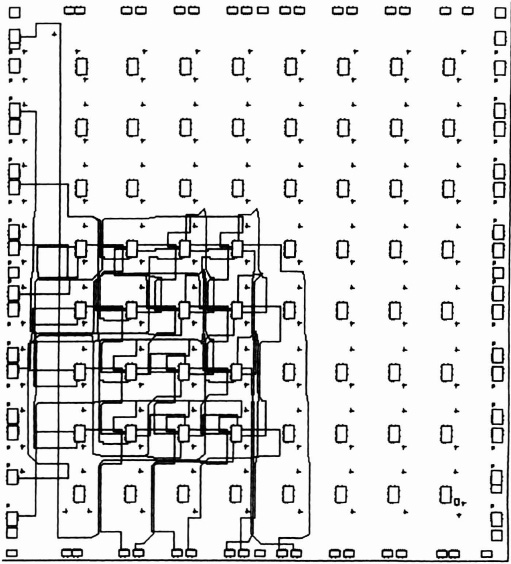5.7 A PARALLEL CONTROLLER DESIGN*
An outline of the design and implementation of a video framestore design is presented that used the Petri net method described in Chapter 2, and is implemented on a Xilinx LCA.
The function of the framestore is to receive or transmit digital video data from a memory in a raster scan format. Region of interest (ROI) is supported, allowing the reception and transmission of frames of any size. Video data arrive on a 16-bit-wide bus every 100 ns. A frame synchronization signal defines the start of a field of data of 260 lines by 760 pixels. Each line starts with a horizontal synchronization signal. The video controller has to deposit the data in a video framestore in the correct order (interleaving two fields to create a full frame) and to manage accesses to the memory. A second independent video channel operates at the same time, but it must access a different block of memory. A transputer is able to access both memory blocks while video operations are being performed. At the end of a frame, the video channels may be required to switch memory banks, and this must be handled by the controller.

Figure 5–33. XACT view of the parallel multiplier.
The controller has a number of registers containing its operating parameters, such as horizontal start and end count, vertical start and end count, and start address in memory. Figure 5–36 shows the datapath ...
Get Field-Programmable Gate Arrays: Reconfigurable Logic for Rapid Prototyping and Implementation of Digital Systems now with the O’Reilly learning platform.
O’Reilly members experience books, live events, courses curated by job role, and more from O’Reilly and nearly 200 top publishers.

